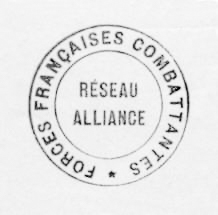
My attention is always drawn to stories about the brave members of the resistance movements who fought the Germans in their respective occupied countries. These men and women were always aware of their potential fatal outcomes if caught but largely ignored it to continue the fight for liberation. I’ve written in the past about some of these fighters including Nancy Wake (read here), the Boulloche sisters (read here), the Sussex Plan (read here), Rose Valland (read here), and the SOE—Special Operations Executive (read here).
Today, I’ll introduce you to the remarkable Hedgehog and the other animals of Noah’s Ark, one of the most successful résistance réseaux (resistance networks) operating in France during the German Occupation.
Did you Know?
Nazi concentration camp prisoners (i.e., those chosen for labor and not sent directly to the gas chambers) received a number tattooed on their arm. The misconception is that all camps tattooed their prisoners. That is not true. Only Auschwitz and two of its sub camps, Birkenau and Monowitz, practiced tattooing the prisoners. Learn more in our next blog, The Auschwitz Tattooist.
The French Resistance
Most people have the mistaken idea that the French resistance movement was a single organization comprised of men and women with the same motivation: identify and sabotage strategic German targets for the purpose of driving the occupiers out of France. It’s not that simple.
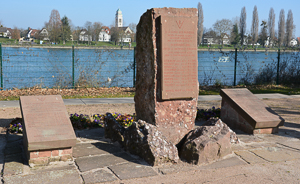
The French Resistance movement was largely comprised of hundreds of independent networks, each with its own set of politics, motivations, and specific purposes. These networks were Communist, apolitical, right-leaning, left-leaning, and Christian democratic. Resistance activity began to gain strength after Hitler attacked Soviet positions in eastern Poland on 22 June 1941 in violation of the terms of the Molotov-Ribbentrop Pact. Prior to the German attack, French communist resistance activities were not allowed by Moscow.
Eventually, Charles de Gaulle assigned Jean Moulin the task of uniting and organizing the various resistance networks. In May 1943, Moulin created the Conseil National de la Résistance (CNR) under which the primary networks would coordinate their activities with the Free French Forces of the Interior.
The Alliance Network

Georges Loustaunau-Lacau (1894−1955) was a right-wing, anti-communist French army officer and member of La Cagoule. During the 1930s, Navarre (Loustaunau-Lacau’s nom de guerre or combat pseudonym) had founded a publishing company called L’Ordre National and began publishing a magazine warning his fellow citizens about Hitler and Germany’s intentions. In September 1939, a very remarkable woman, not yet thirty years old, Marie-Madeleine Fourcade (1909−1989) was running the company almost single handedly after having been its editor and general-secretary since 1937. Once France was occupied, the company was shuttered.
After the Germans occupied France and the Vichy government was established, Navarre asked Marie-Madeleine to lead a new resistance movement called the Alliance Network. Reluctantly, she agreed and at the height of network’s activities against the Germans, Marie-Madeleine was leading approximately 3,000 partisans throughout France.
The Hôtel des Sports
Navarre stepped away from his day-to-day leadership role in Alliance to head up a new organization (sponsored and supported by Pétain and Vichy). The Hôtel des Sports was the location of the Légion française des combattants which Navarre ran as an undercover operation while overseeing the Alliance Network. Through this group, Navarre was able to recruit new agents and gather intelligence which was then passed onto the Alliance Network and ultimately, London. Navarre was arrested several times by Vichy with his last arrest resulting in imprisonment at the Mauthausen concentration camp where he would remarkably survive the war.
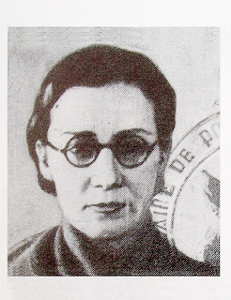
Simultaneously, Marie-Madeleine was organizing Alliance into sectors and personnel within the unoccupied zone. Next, she tackled the occupied zone with its labyrinth of network cells. As a woman operating in a “man’s world,” Marie-Madeleine had to overcome the prejudice of both the men she led in the network as well as the British leaders of MI6, MI9, and SOE. She quickly proved to all concerned that her skills, both organizational and strategic, as well as her ability to quickly assess personalities were unmatched.
Noah’s Ark
Marie-Madeleine used code letters and numbers to identify her agents. She was known as POZ/55. The organization grew rapidly under Marie-Madeleine’s leadership. As with most of the large French resistance networks, it was virtually impossible to keep traitors and informants from infiltrating the group. In the case of Alliance, it was a radio operator. After the arrests of many Alliance agents, Marie-Madeleine took immediate steps to re-organize the network. She changed its structure from a centralized to a decentralized one with each cell operating independently. Another change was to assign all agents with a new code name. At that point, every agent’s pseudonym became an animal name. Marie-Madeleine became “Hedgehog.” Other adopted names were Ermine, Magpie, Eagle, Tiger, Spaniel, Seagull, and so on.
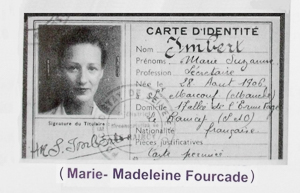
Days before the Nazis marched into the Occupied Zone in November 1942, Marie-Madeleine and Alliance undertook a dangerous mission to transport General Henri Giraud to Gibraltar for a meeting with General Eisenhower. This attracted the attention of Vichy and Marie-Madeleine was arrested. Sympathetic Vichy police permitted her and the others to escape thereby avoiding certain execution at the hands of the Gestapo.
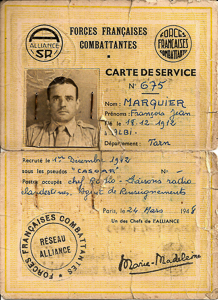
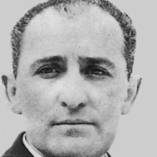
The Nazis knew her name, her leadership position, and the location where she operated from. They also knew quite a bit about the Alliance Network and named it “Noah’s Ark” because of the agents’ animal nom de guerre. Due to her important position and the fact the Gestapo was closing in on her, British intelligence insisted Marie-Madeleine return to London. While reluctant to leave France, Marie-Madeleine flew to England in 1943 after two years in charge of Alliance. She would stay there for one year while continuing to coordinate the activities of Alliance and her “animal” agents. Alliance’s chief of staff, Léon “Eagle” Faye (1899−1945) remained behind to carry out her orders. Col. Faye was eventually arrested, moved to a prison in Poland, and executed along with 800 other prisoners by the SS on 30 January 1945 as the Nazis began to flee from the encroaching Soviet army.
A Return to France
A month after D-Day (6 June 1944), Marie-Madeleine returned to France to resume her active leadership of Alliance. Almost immediately, Marie-Madeleine was arrested by the Gestapo. She knew the interrogation would be brutal and the end result would be death. So, the night before the interrogations were to begin, Hedgehog escaped by stripping off her clothes and wiggling out between the bars of her cell.
Approximately 500 of the Alliance Network died at the hands of the Nazis. The majority of them were sent to the Natzweiler-Struthof concentration camp, the only extermination camp located on French soil. The camp was built to house captured partisans, foreign agents (e.g., SOE), victims of the German “Nacht und Nebel” program (read here), and Jews who were used in Nazi medical experiments. Women accounted for around 17 percent of the total Alliance agents. Almost 50 of these women were executed.
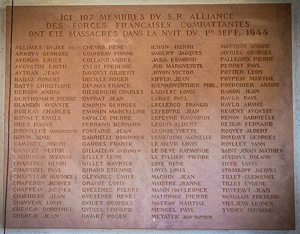
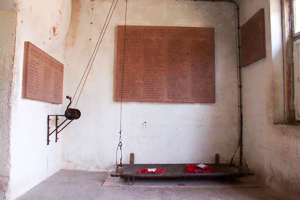
Noah’s Ark’s contributions to the Allied war effort were immense. The network provided intelligence information on German submarines and ship movements. An important piece of information turned over to London was a detailed map of the German defenses in Normandy. One of Marie-Madeleine’s female agents gathered substantial information on the secret production of the V-1 and V-2 rockets which assisted in the Allied efforts to destroy Peenemünde.
Post-War and Death
At the end of the war, Marie-Madeleine and Navarre were discussing their plans for the future. Navarre wanted to go into politics and he successfully achieved that goal. For Marie-Madeleine, her life would be dedicated to carrying on the fight to ensure the children of France would never have to endure the hardships or risks recently experienced by France and the world under the jackboot of the Nazis.
Madame Fourcade played a major role in supporting Charles de Gaulle and in the 1970s, she became president of the Action Committee of the Resistance. During the 1980s, Marie-Madeleine was instrumental in aligning France with the United States and the Strategic Defense Initiative. She felt, rightfully, that France and the world had paid a terrible price to recover their countries and to defend “the dignity of man and his fundamental rights.” Marie-Madeleine would do anything to see that there was never a repeat of fascism or Nazism.
Marie-Madeleine lived to be eighty and died in Paris. She is buried in the family (Bridou) plot located in Père Lachaise cemetery. As one of the most important leaders of the French Resistance (and one of its few women in a leadership role), Marie-Madeleine Fourcade earned France’s highest honors including the Legion of Honor, the Medal of the Resistance, and the Croix de guerre.
Frankly, this is a woman who should be buried in one of France’s most honored burial sites: either the Panthéon or Les Invalides (her funeral service occurred there).
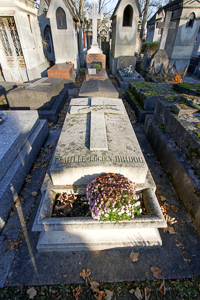
Recommended Reading
Atwood, Kathryn J. Women Heroes of World War II. Chicago: Chicago Review Press, 2011.
Fourcade, Marie-Madeleine. Translated from the French by Kenneth Morgan. Noah’s Ark. New York: E.P. Dutton & Company, Inc., 1974.
Olson, Lynne. Madame Fourcade’s Secret War. New York: Random House, 2019.
Rossiter, Margaret L. Women in the Resistance. New York: Praeger Publishers, 1986.
What’s New With Sandy and Stew?
We were able to see our nephew, Dan Owen, over the holidays (he came out to Florida to visit his grandfather). You may recall that Dan accompanied us on our research trips to Paris for the first four books: Where Did They Put the Guillotine? Volumes 1 & 2; Where Did They Burn the Last Grand Master of the Knights Templar? Volumes 1 & 2. Dan is a professional photographer and shot all the contemporary images for the four books.
Unfortunately, he was not able to go with us this past September for our research on the next two books: Where Did They Put the Gestapo Headquarters? Volumes 1 & 2. We told Dan we really wanted him to do the photos for the seventh book, Where Did They Bury Jim Morrison, the Lizard King? A Walking Tour of Curious Paris Cemeteries.
We need some creepy photos for that book and Dan does creepy photos well.
Someone Is Commenting On Our Blogs
I was researching where Georges Loustaunau-Lacau was buried when I came across a blog site called Heroines of World War II. It is a very interesting site but much to my surprise, included along with the blogger’s other posts was my blog The Last Train Out of Paris (read here). At the end of the blog, she did reference www.stewross.com.
Now I always appreciate the exposure but I was kind of taken back. If the tables had been reversed, I would have contacted the blog’s author and asked permission to include it in my blog site. A discussion like that might have opened up further opportunities for both of us. Oh well.
If there is a topic you’d like to see a blog written about, please don’t hesitate to contact me. I love hearing from you so keep those comments coming.
Why Would You Want To Buy Our “Walks Through History” Books?
Simple.
You like to travel and experience history and historical events. You like to see original buildings that had a significant impact on the people and events of the history you’re engaged with. You want to know the stories behind the brick and mortar in front of you.
The walking tour books are meticulously researched so you can go directly to those sites and learn about the building’s history as well as an introduction to some of the more interesting people associated with it.
Thank You
Sandy and I appreciate you visiting with us. We have some exciting things on the horizon and we’ll keep you updated as we go along.
Share This:
Follow Stew:
Find Stew’s books on Amazon and iBooks.
Please note that we do not and will not take compensation from individuals or companies mentioned or promoted in the blogs.
Walks Through History
Copyright © 2018 Stew Ross


It would be grand of you to read my book, “Messages in Handlebars” about the youngest French resistance fighter to receive the Croix de Guerre. It is on Amazon as a paperback and as an ebook.
Thank you Kendrick for your comments. I am looking forward to reading your book. These are uplifting stories and unfortunately, there are thousands of other stories like this that have been lost to history. STEW
Thank you for this article which reminds us of the sacrifice made by many and so often forgotten. Jean Raison, codename “Phalene” was one of the members of Noah’s Ark executed on September 1st 1944. He was my grandfather. His wife Denise was also a Lieutenant codename “Passerelle”. She passed away in 2009. Their memory lives in their grandchildren, my sister and I.
Thank you Florent for contacting me regarding your grandfather. Believe it or not, you are not the first grandchild of a réseau Alliance agent who has reached out to us. Have you heard of the Association l’Alliance? It is a group in France dedicated to preserving the memory of the agents. The president, Richard Kauffmann, would be happy to talk with you. His grandfather was one of the leaders and executed along with your grandfather on 1 September 1944. Please visit http://www.reseaualliance.org for more information. I’d be very interested in hearing the story of your grandmother and how she survived. Hopefully, we’ll talk soon. STEW